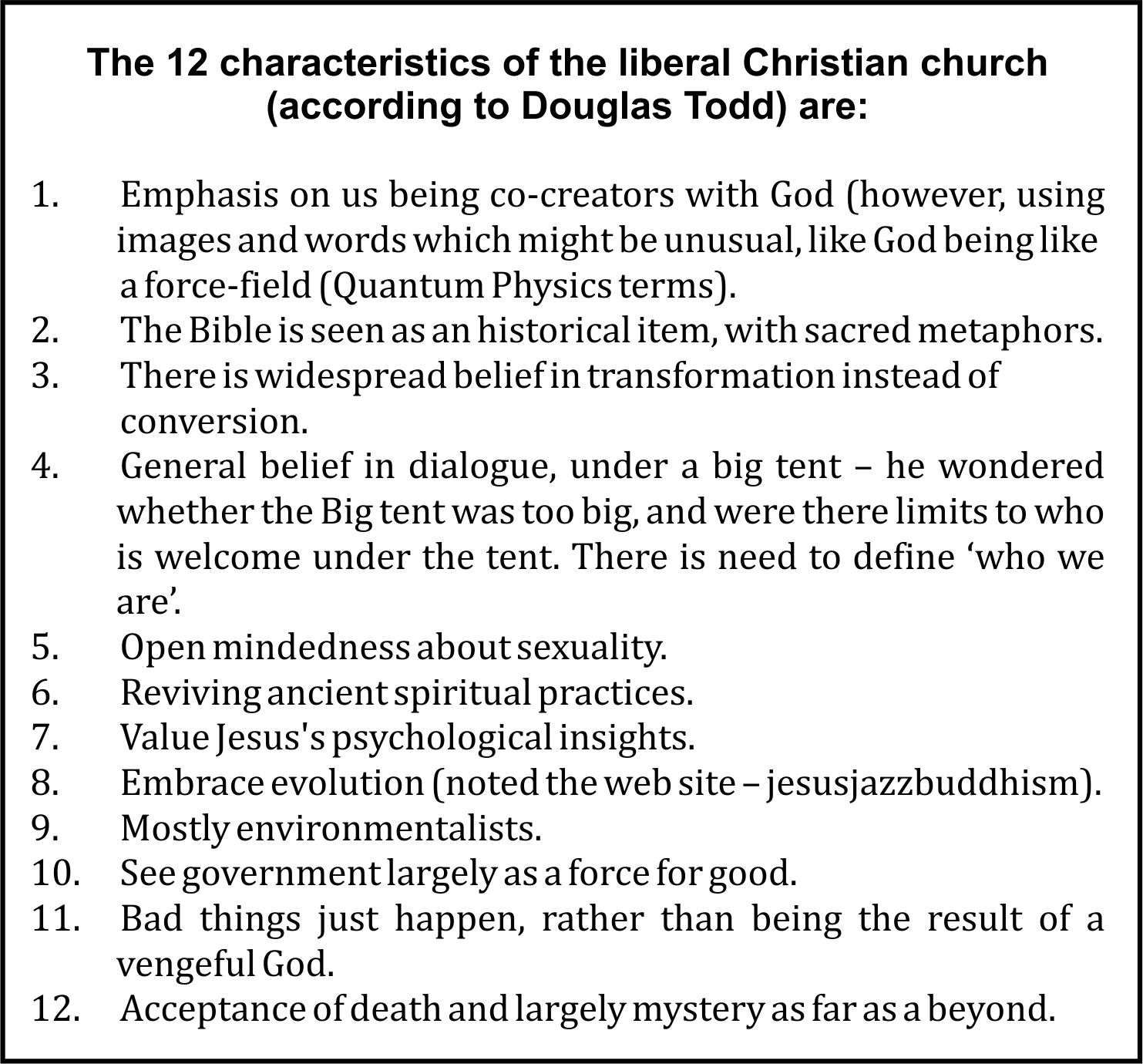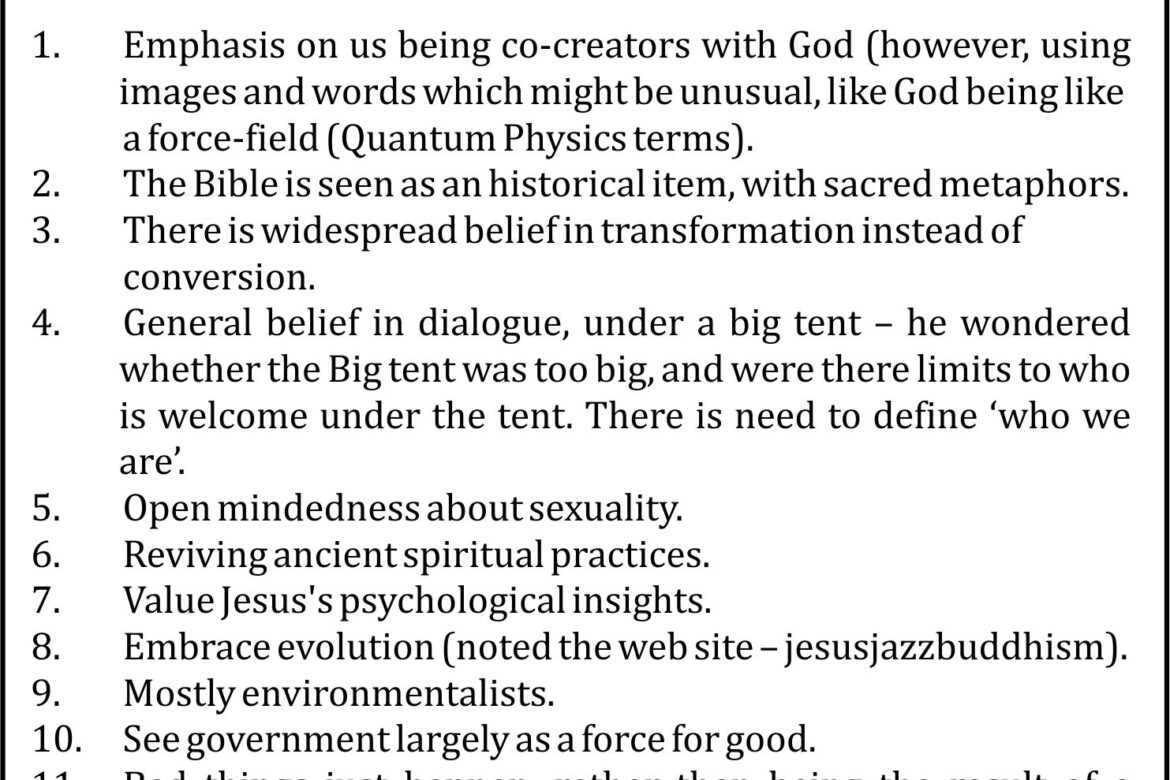Other news
Epiphany Explores ‘Religion After Religion’
Volume 30 Issue 1, 2 & 3 | Posted: April 5, 2016

Religion is changing. Not that many decades ago, you were either a believer or you weren’t. It was pretty simple. Now things are much more complicated, a third category has emerged. Now, according to Census Canada (with or without the Long Form), the fastest growing category of ‘religious’ belief is ‘none of the above.’ It has doubled during the past census period, and is expected to have tripled in the next decade. Christianity is still 65 per cent of the population. All other religions account for ten percent.
Catholicism accounts for 60 per cent of the Christian figure but the figures are skewered because of the Quebec factor where the vast majority of the census population list themselves as Catholic but it amounts to a cultural distinction rather than a religious practice fact.
Religion is changing. Not that many decades ago, you were either a believer or you weren’t. It was pretty simple. Now things are much more complicated, a third category has emerged. Now, according to Census Canada (with or without the Long Form), the fastest growing category of ‘religious’ belief is ‘none of the above.’ It has doubled during the past census period, and is expected to have tripled in the next decade. Christianity is still 65 per cent of the population. All other religions account for ten percent.
Catholicism accounts for 60 per cent of the Christian figure but the figures are skewered because of the Quebec factor where the vast majority of the census population list themselves as Catholic but it amounts to a cultural distinction rather than a religious practice fact.
All this information formed part of Paul Bramadat’s sociology of religion presentation at Epiphany. Other key presentations along the lines of this theme were religion journalist Douglas Todd on the joys and vulnerabilities of liberal Christianity and Tom Axworthy on the virtue of tolerance.
In terms of the rise of liberal Christianity, historically types of Christians were pretty well cut and dried. A lot was assumed. Then in the 1960s it was more fully realized that Catholics and Protestants were not than far apart, and after the 1960s the differences were marginalized, then fundamentalist reaction set in.
Liberalism was suspect and the extremes started to dictate the agenda. ISIS is just an extreme example of the foul use to which religion was starting to be regularly put, justifying the worst sorts of atrocities and human rights abuses.
This year’s Epiphany Explorations conference held at First Metropolitan United Church in Victoria, January 21 – 24, illustrated three important thrusts in the self-examination of religion that Epiphany has come to provide in its nearly decade and a half of persistence.
In many ways the very fact of persistence of religion after the structural collapse of organized religion was their common theme. What the new numbers are and reveal, how and what liberal Christianity has cause to celebrate and promote (in a low key Canadian way, of course), and what the environment and ecology – clearly the most comprehensively demanding spiritual responsibility for the next decades – has to say, by way of the example of Saving The Far North nearly pristine Mackenzie River Delta system.
Paul Bramadat’s presentation titled Religion after Religion was the most intriguing if only for its revelations statistically about religion in Canada. His presentation manner and style, in its clear superiority and adult intelligence did not hurt either.
Doug Todd’s twelve point celebration of the bragging points of liberal Christianity (see below) complemented Bramadat in an interesting way. Finally, Tom Axworthy’s more traditional tone of presentation on the challenge and possibility of saving the Mackenzie Delta waterway in Canada’s far north was important if almost evangelical in its pitch of delivery and style of plan to accomplish this critical goal.
Bramadat made his presentation in the form of power point slides. As a sociologist of religion, a semblance of objectivity is assured. He said he and his handful of similarly oriented colleagues across Canada relied on the Statistics Canada long form information, which despite its interruption during the Harper Government era, the flow of data is reliable because the interruption was gratefully short in duration.
Despite impressions to the contrary, 64 percent of the population is Christian, with the other religions making up ten percent. While the Muslim increase is significant proportionally, the only other category that has significantly increased is that of ‘no religion’ which has jumped 50 percent between census decades, from 12 percent in 2001 to 24 percent in 2011, and he expects it to reach 36 percent in 2021 the next census year.
 Interestingly atheist and agnostic figures have not budged much. ‘No Religion’ includes the burgeoning category of spiritual but not religious (SBNRers see related article page 3) and reflects an abandonment of theism generally. Cosmic spirituality (see article page 10) plus the paganism of the nature worship stage of youth are contributing factors to the astonishing fact that Victoria has more than twice the national average of No Religion at 50 percent of the population, much higher that even Vancouver.
Interestingly atheist and agnostic figures have not budged much. ‘No Religion’ includes the burgeoning category of spiritual but not religious (SBNRers see related article page 3) and reflects an abandonment of theism generally. Cosmic spirituality (see article page 10) plus the paganism of the nature worship stage of youth are contributing factors to the astonishing fact that Victoria has more than twice the national average of No Religion at 50 percent of the population, much higher that even Vancouver.
The United Church is clearly furthest to the left of the mainstream Christian denominational spectrum. As such it is usually the least defensive to the data that Paul Bramadat spoke about in his talk. Normally it takes a positive attitude toward the ‘good things’ in new phenomenon. While the danger can be a sort of faddism, the real effect is an interesting integrative hybrid spirituality that faces the real world on real terms.
Tom Axworthy’s talk on Canada’s Cold Amazon – protecting the McKenzie River Basin of Canada's far north represented both the advantages of liberalism in theological matters and its limits. Axworthy also did a later presentation on Tolerance as an under appreciated value which pretty well makes the essential point about liberal Christianity.

